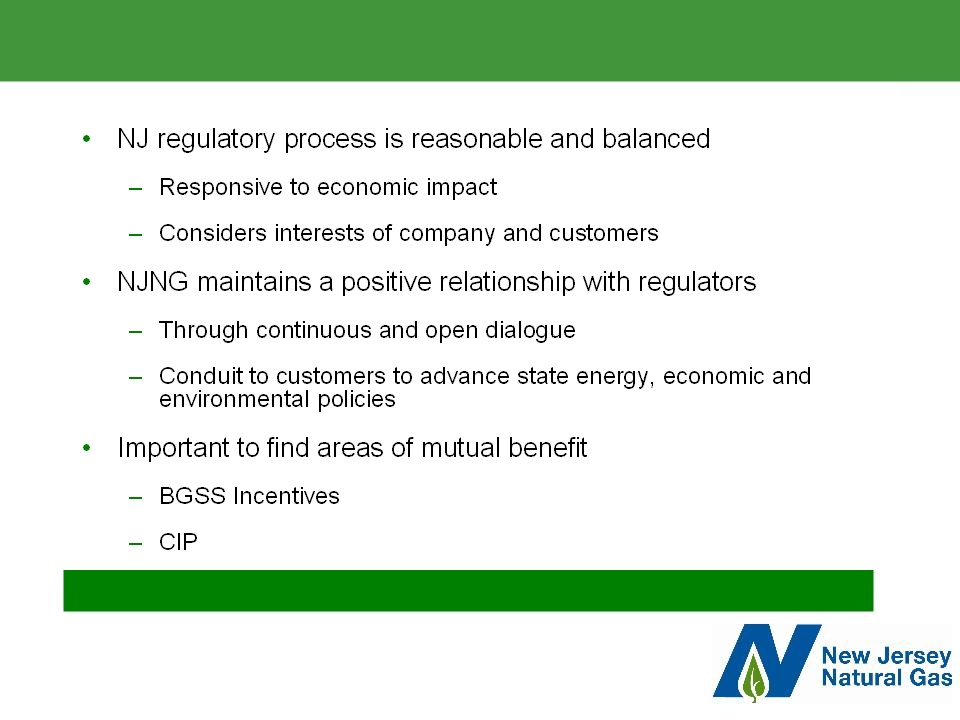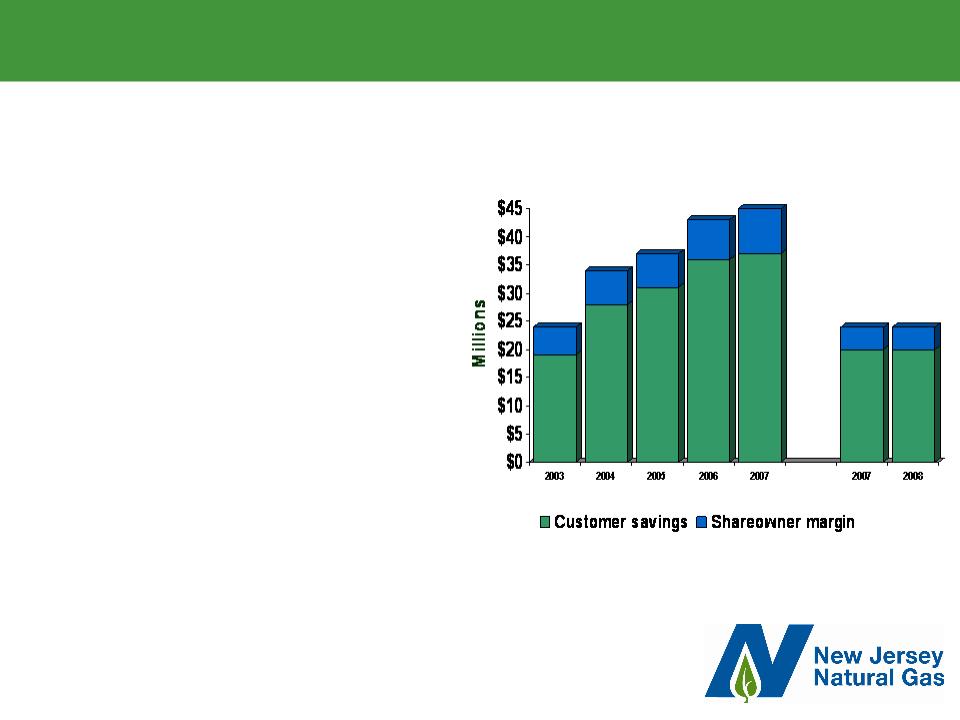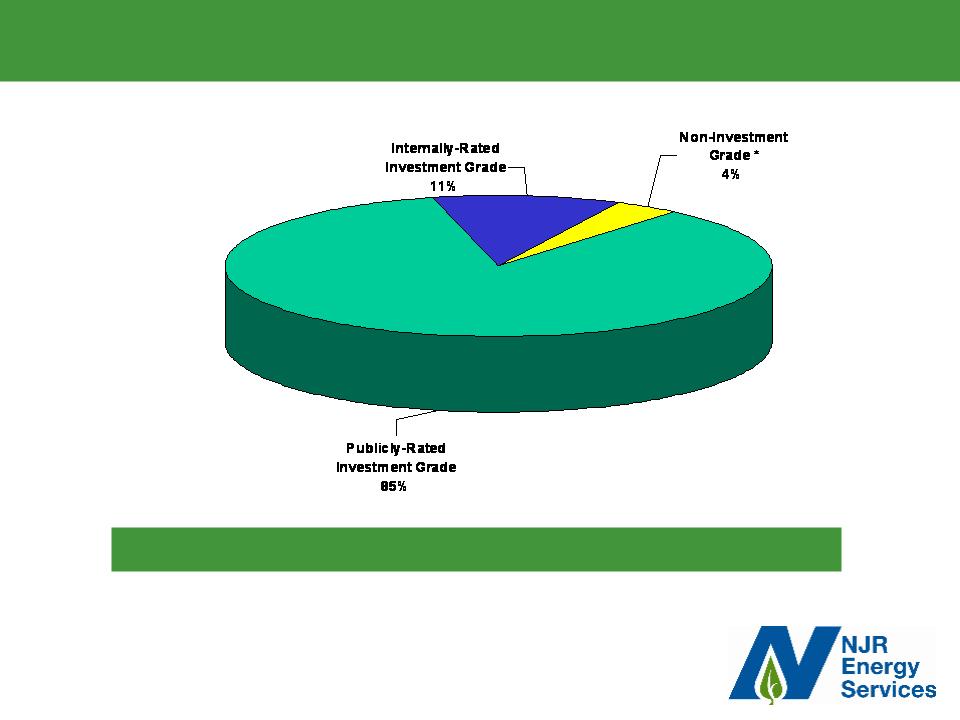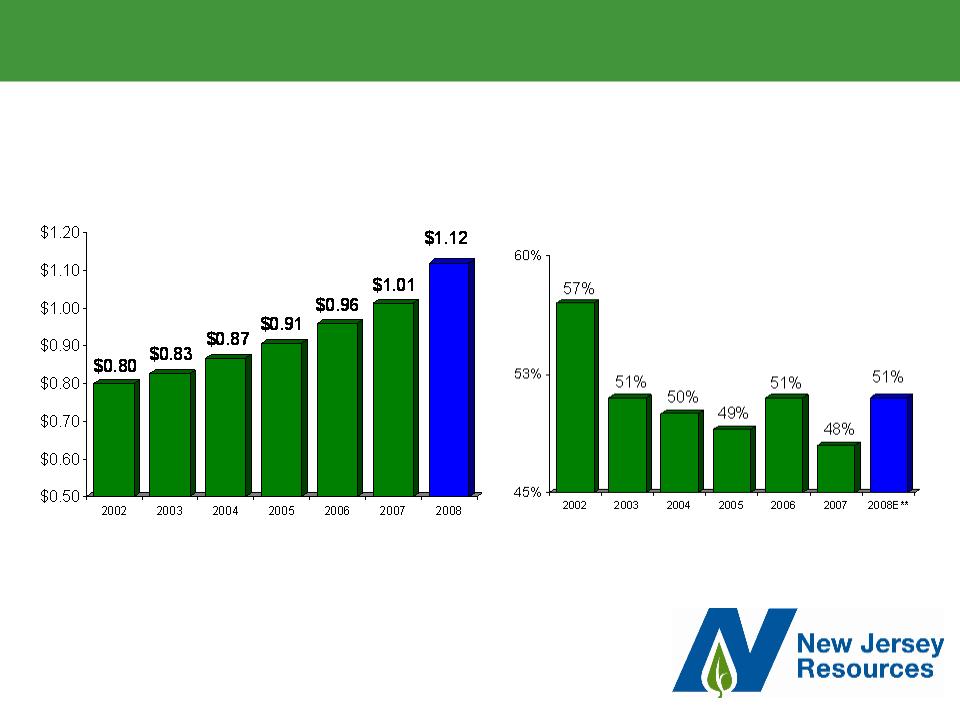Certain statements contained in this presentation are forward-looking statements within the meaning of the Private Securities Litigation Reform Act of 1995. Forward-looking
statements can also be identified by the use of forward-looking terminology such as “may,” “intend,” “expect,” or “continue” or comparable terminology and are made based upon
management’s expectations and beliefs concerning future developments and their potential effect upon New Jersey Resources (NJR or the Company). There can be no
assurance that future developments will be in accordance with management’s expectations or that the effect of future developments on the Company will be those anticipated by
management.
The Company cautions persons reading or hearing this presentation that the assumptions that form the basis for forward-looking statements regarding customer growth,
customer usage, financial condition, results of operations, cash flows, capital requirements, market risk and other matters for fiscal 2008 and thereafter include many factors that
are beyond the Company’s ability to control or estimate precisely, such as estimates of future market conditions, the behavior of other market participants and changes in the
debt and equity capital markets. The factors that could cause actual results to differ materially from NJR’s expectations include, but are not limited to, such things as
weather, economic conditions and demographic changes in the New Jersey Natural Gas (NJNG) service territory, rate of NJNG customer growth, volatility of natural
gas commodity prices, its impact on customer usage and NJR Energy Service's (NJRES) operations, the impact on the Company’s risk management efforts,
changes in rating agency requirements and/or credit ratings and their effect on availability and cost of capital to the Company, commercial and wholesale credit
risks, including the creditworthiness of customers and counterparties, the ability to obtain governmental approvals and/or financing for the construction,
development and operation of certain non-regulated energy markets, risks associated with the management of the Company’s joint venture and partnerships, the
impact of governmental regulation (including the regulation of rates), fluctuations in energy-related commodity prices, conversion activity and other marketing
efforts, actual energy usage of NJNG’s customers, the pace of deregulation of retail gas markets, access to adequate supplies of natural gas, the regulatory and
pricing policies of federal and state regulatory agencies, the ultimate outcome of pending regulatory proceeding, in particular, the base rate case filing, changes due
to legislation at the federal and state level, the availability of an adequate number of appropriate counterparties in the wholesale energy trading market, sufficient
liquidity in the wholesale energy trading market and continued access to the capital markets, the disallowance of recovery of environmental-related expenditures
and other regulatory changes, environmental-related and other litigation and other uncertainties, the effects and impacts of inflation on NJR and its subsidiaries
operations, change in accounting pronouncements issued by the appropriate standard setting bodies, terrorist attacks or threatened attacks on energy facilities or
unrelated energy companies and other uncertainties. While the Company periodically reassesses material trends and uncertainties affecting the Company’s results of
operations and financial condition in connection with its preparation of management’s discussion and analysis of results of operations and financial condition contained in its
Quarterly and Annual Reports, the Company does not, by including this statement, assume any obligation to review or revise any particular forward-looking statement referenced
herein in light of future events.
Regarding Forward-Looking Statements






























